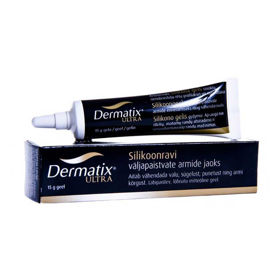Question from a customer: Does it make sense to use silicone gel for scars? Does it make sense to apply it to the wound?
Pharmacist's response:
For softening healed scars, silicone gel is mainly used. However, it is only allowed in well-healed burns, wounds, or grafts, so never apply silicone gels to the damaged surface.
Occasionally, mild skin reactions such as rashes may occur while using silicone gels, but such a reaction is rare. Several silicone products are available, and your therapist or doctor will discuss with you the most suitable product to treat your scar.
How does wound care take place?
Wound care is a process carried out to effectively prevent infection, promoting faster-wound healing and providing a safe environment for the wound to heal. Wound care can be a demanding task that requires the help of medical personnel, or it can also be performed at home according to a pre-agreed protocol, especially if the wound is large.
The first step in wound care is cleaning the wound. This can be done with the help of warm water and soap or with solutions of this type (for example, ActiMaris Sensitive, etc.). After that, it is essential to dry the wound with sterile gauze or a napkin to remove all impurities and possible bacteria.
Then it is necessary to protect the wound. This can be done with the help of a sterile bandage or a protective patch. If the damage is severe or bleeding occurs, it is necessary to use a sealant to prevent possible blood loss.
After this procedure, it is essential to inspect the wound over time and monitor its progress regularly. If signs of infection such as fever, elevated body temperature, swelling, or pus appear, you should see a doctor immediately.
Wound care requires precision and care. However, we can quickly and effectively promote wound healing and prevent complications with proper care.
Necessary when applying silicone gel
Before applying the silicone gel to the scar, never use a moisturizer beforehand.
The cream, which also contains an oily lipophilic phase, creates a sliding layer between your skin and silicone and significantly reduces the effect of the gel. You can apply the care cream after removing the silicone gel.
Do not wear the gel in the tube under the shower or while swimming - keep it away from heat sources. Exposure of silicone gel to adverse conditions tends to render the gel unusable.
If you have a skin reaction...
A skin reaction to silicone gel is an infrequent side effect, but if it does occur, stop using the silicone gel.
- Contact your doctor or physiotherapist as soon as possible.
- You can change the application regimen or use another silicone-based product when the skin reaction subsides.
Protocol for using silicone-based gel: wash the skin in a mild, non-greasy soapy solution - rinse the skin in clean, warm water.
- Air dry the skin and apply the gel to a clean area of the scar.
- Avoid using paper-drying products, as paper particles can stick to the silicone.
- Store silicone in a plastic bag or plastic container during regular use.
Interesting reading: Silicone gel for scars
Interesting reading: Phases of wound healing











